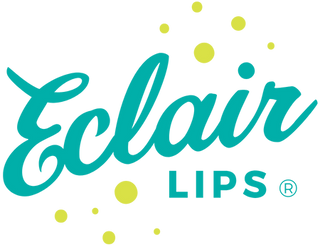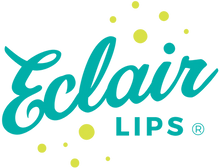All About Product Labels
I get a lot of questions about product labels, and I thought I’d put together a little series about them!
Getting Labels Made vs. Printing Them Yourself
First thing people ask is where to buy labels, and there are so many different sources depending on where you live. If you google "label printing companies in [your country or area]" you should come up with a list of businesses that you can start approaching for quotes to see if they can meet your needs.
However, if you’re just starting out and don’t need a large number of labels, or you need small quantities of a lot of different sizes of labels, printing your own can be a good option! You can buy blank labels in just about every size and shape you can imagine, print them on an inkjet printer, and get great results. Even we still print our own labels every once in a while.
Approaching a Printing Company For a Quote
If you’re working with a reputable printing company, you can honestly just tell them it’s your first time ordering labels, and they will ask you all the important questions to make sure you get a great product.
But it doesn’t hurt to be informed, and it will also help you identify companies that are going the extra mile for you.
The first thing you’ll want to figure out is what size and shape of label you need for your product, and if having that size and shape is a deal breaker. Each company will have a collection of what they call "dies" - they are like cookie cutters to make different types of labels. If they already have a die for the size and shape you want, or they have something really close that would still meet your needs, it makes things easier.
If they don’t have a die that will work, you’ll have to get your own made. It’s not a problem, but it does drive up the cost of your labels. Thankfully, you only have to pay for that die charge on the first order.
Choosing a Finish and Adhesive For Your Labels
The finish is how the surface of the label looks, and there are a lot of options to choose from like matte, satin, glossy, metallic, etc. Label companies should be able to send you samples so you can see how they look in person.
You’ll also need to think about where your product will be used. Will it be in contact with water? Grease? You’ll want to let your label company know and ask them what types of labels they have that will work in those environments.
Next is the adhesive, which is the glue on the back of the label. It might not seem like it’s important, but it can make or break your label!
For items that are flat or don’t have a tight curve, like a larger jar, you’ll be likely be okay with a regular adhesive. But if you have something with a tight curve, like a lip balm tube, you’ll need to make sure you get what they call an aggressive adhesive. Otherwise, you risk having a label that will pop right off the tube.
And if your product is meant to be frozen or refrigerated, you’ll need a special adhesive that can stand up to those temperatures too.
How To Save on Product Labels
The more of one type of label you order, the better price. But that doesn’t necessarily mean that all of the labels have to have the same design on them.
Many printing companies will allow you to print multiple different designs at once and count it all as one item, as long as you are using the exact same size, shape, finish and adhesive for all the different designs or "versions."
Here’s an example: let’s say I want to order 1000 labels for 10 different flavors of lip balm. Everything about those labels is the same, but the design we’re printing on each one is different. They’ll count that one big 10,000 label order.
But what if you have a few completely different products? In some cases, you might be able to get away with using the same size and shape label, especially if they are packaged in similar size jars or bottles. It doesn’t always work out, but if you can do it, it’s a great way to save money!
Designing Product Labels
When it comes to the design, the very first thing you’ll want to do is check if there are any regulations in regards to labelling for the product you’re selling, and make a list of information to include. For example, there are very specific details required for cosmetics labels, and they vary from one country to another.
From there, you’ll want to make sure that either you or your designer create a label that works well for that product while including all those necessary details. It should be easy to read, uncluttered and give people a feel for what your brand is all about.
Once you have a rough design, I recommend printing a copy on your printer, cutting it to size and sticking it on your product to see how it looks in real life. It can come across a lot different in person than on a computer screen!
Submitting Your Label Designs to the Printer
As much as we all love Canva, many printing companies won’t be able to work with files that you can generate there. Instead, you’ll need to create the design in a program like Photoshop or Illustrator.
If you have a designer who has done all of your labels for you, you should be all set! Just ask your printing company for the file specifications, and send it to the designer to make sure they prepare everything the right way.
If you don’t have a designer on staff, many label printing companies will have an in-house graphics department that can prepare the files for you at an extra charge, which is what we do. We’ll give them a Canva file showing what we want the label to look like, and they re-create if for us exactly in the right format.
No matter who creates your files though, the printer will always send you a proof before they print it. Although it can be a printed copy, it’s usually a digital file that you look over one last time to make sure everything looks good before giving them the okay to print.
Making Sure Your Labels Work With Your Machine
A label applicator machine is absolutely not a requirement - a lot of companies still apply their labels by hand, and that’s totally okay.
But if you’ve invested in a machine to help apply your labels, you’ll want to make sure that you let your printer know that you’ll be using one. Each model has different specifications, and your printer will need to know how big of a roll yours can accommodate, as well as what direction to wind the labels onto the roll so that they’ll unroll properly on your machine.
And if you’re looking for a label applicator machine, the best thing to do is to google "label applicator machine "along with the type of product you want to label, whether it’s jars, bottles, tubes or any other packaging. There are a lot of different models and price ranges out there, so it’s important to research and find something that will work with the type and volume of products you need to label.




